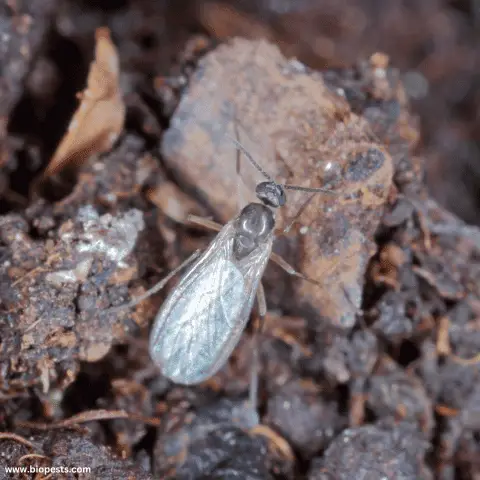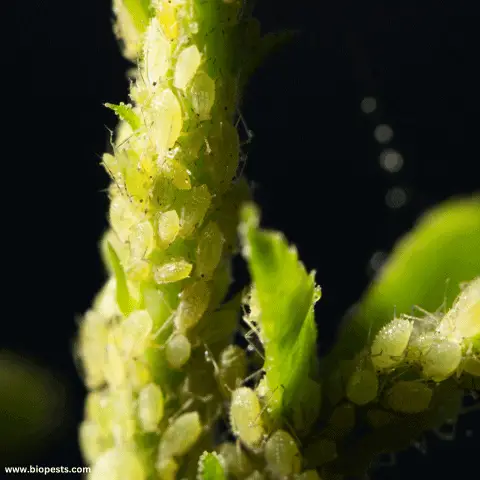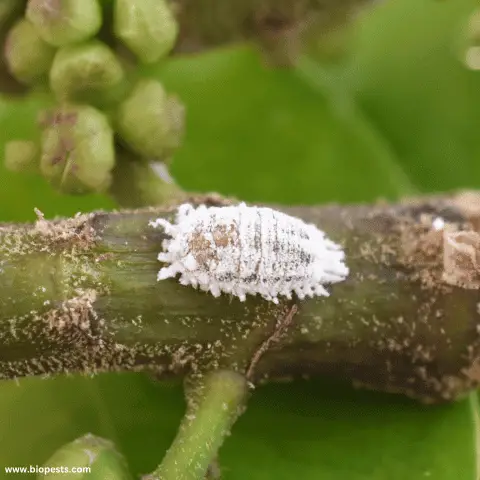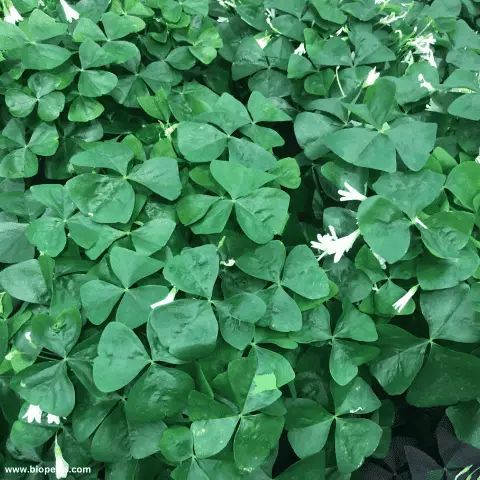Are you a devoted oxalis plant enthusiast? Then you understand the importance of keeping your beloved greenery in tip-top shape. But even the most vigilant plant parents can encounter pesky pests. If you’ve recently acquired an oxalis plant or are considering getting one, this article is a must-read for you (as well as my previous one about oxalis most common diseases).
I will delve into the most common pests that pose a threat to your oxalis well-being. By taking early precautions, you can ensure a long and healthy life for your green companion.
Most Common Pests Of The Oxalis Plant:
Here’s a guide to the most common pests that can harm your oxalis plants. Let’s uncover the critters that can cause trouble for your beloved greenery. We’ll start with the infamous…
Spider mites
Mites are one of the biggest pests that can attack your beloved Oxalis plant. Though tiny, a spider mite infestation can be potentially catastrophic for your plant if left unaddressed. Mites are known for being fast breeders and can quickly spread throughout your plant.
Identification: The first step in managing spider mites is correctly identifying them. Spider mites are tiny insects that live on the undersides of leaves. They are difficult to see with the naked eye, but you can easily spot them using a magnifying glass. Spider mites can cause leaf discoloration, yellowing, and webbing on the plant. If you see any of these symptoms, you must check for spider mites immediately.
Treatment: If you’ve identified spider mites on your oxalis plant, acting quickly before the infestation spreads is essential. Spider mites are relatively easy to treat with a pesticide. You can find a variety of commercial pesticides specifically formulated for spider mites. Make sure to follow the instructions on the label carefully. Alternatively, you could use a homemade solution by mixing a tablespoon of dish soap with a gallon of water and spraying it directly on the affected leaves or the entire plant. (Check my article here on safely spraying houseplants with soapy water).

Prevention: Prevention is critical in managing spider mites on your oxalis plant. Regularly inspect your plant, and note any discolorations, yellowing, or webbing. You can also spray the leaves with water to keep the plant clean and free from dust and debris that could attract spider mites or other pests. Another way to prevent spider mites is by keeping the air circulation around your plant flowing by keeping it in a well-ventilated area.
Quarantine: If you have other plants close to your oxalis plant, isolating the affected plant is essential to prevent the spider mites from spreading.
Ongoing Care: After treating and preventing spider mites on your oxalis plant, it’s essential to maintain a consistent care routine. Proper watering, fertilizing, and pruning can also help keep your plant healthy and less susceptible to pests.
Fungus gnats
Fungus gnats can cause damage to your beautiful oxalis plant. These tiny insects are attracted to moist soil, and their larvae can cause damage to the roots of your plant. To protect your plant from fungus gnats, you must know how to identify and kill them.
Identifying Fungus Gnats: Fungus gnats are small, dark-bodied flies. They are about 1/8 inch long, with long thin legs and wings. You can easily recognize adult fungus gnats because they have a distinct pattern of veins in their wings. Another sign of fungus gnats infestation is if you see tiny black flies flying around the plant.

Treatment: You must act fast if you see fungus gnats infestation in your oxalis plant. Here are some tips on how to get rid of them. First, you have to let the soil dry out. Fungus gnats love moist soil, so letting it dry out for a few days will kill any eggs or larvae. You can also use yellow sticky traps (like these ones) to capture adult gnats. Additionally, you can use insecticidal soap or neem oil to kill adult and immature gnats. Be sure to follow the instructions on the label carefully to avoid damaging your plant.
Prevention: prevention is always better than cure. To avoid fungi gnats infestation, make sure to keep the soil of your oxalis plant on the drier side. Always check if the soil is moist before watering. Also, make sure you are using a well-draining soil mix. You can also use a layer of sand or small rocks on the topsoil to prevent gnats from laying eggs. Lastly, avoid using organic or slow-release fertilizers, which can contribute to moist soil.
Aphids
Aphids are one of the most common pests that can target your oxalis plant. They feed on the sap inside the plant and can cause yellowing and wilting of the leaves. If left unchecked, the aphids can cause serious damage to your plant’s health. Look out for clusters of small insects usually located near the plant’s new growth, buds, and at the underside of the leaves. To eliminate these pests, apply neem oil or a homemade soap insecticide on the entire plant, targeting the areas where the aphids are clustered. (check my article on how to spray alcohol on indoor plants)

Mealybugs
Last but not least are mealybugs, a common pest that can attack your oxalis plant. These pests are quite small and white, causing significant damage to your plant’s health when they feed on the sap and tissue. The best way to deal with mealybugs is to start by isolating the infected plant and then using a cotton swab dipped in rubbing alcohol to remove them from the leaves. Alternatively, you could use neem oil or insecticidal soap to fight off a mealybug infestation.

Conclusion:
Now that you know the common pests that can attack your oxalis plant, you can take early preventative measures to protect your precious greenery. The most important thing is to be proactive and catch any pest infestations before they become a significant problem. Healthy oxalis plants have a better chance of fighting off pests. Make sure to keep your plant healthy by providing it with the right amount of sunlight, water, and air. Be sure to remove any dead or damaged leaves. Also, use a balanced fertilizer to ensure your plant gets the nutrients it needs to be healthy.
Some of the links above are affiliate links, meaning at no additional cost to you, I will earn a commission if you click through and make a purchase.


